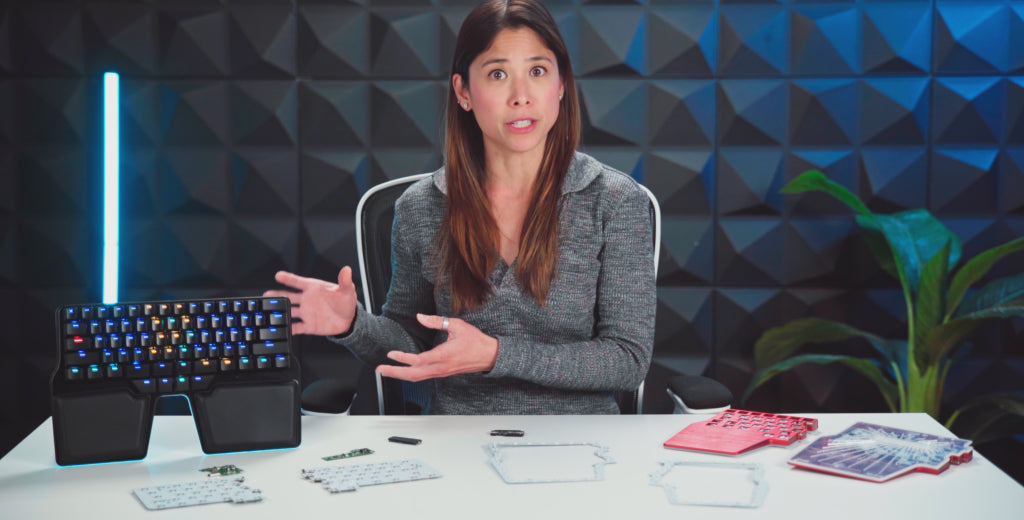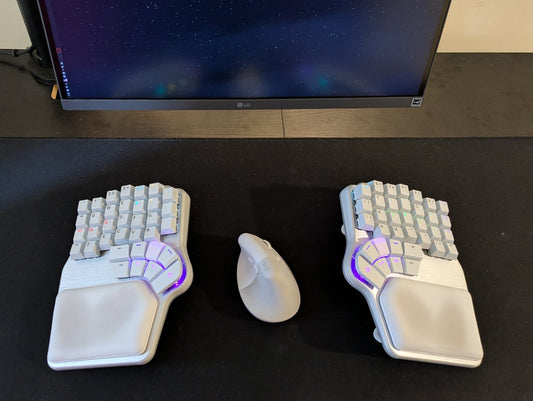Step behind the scenes with us and check how the Dygma Raise 2 is being made. From production milestones to challenging components, get an exclusive look at the keyboard manufacturing journey so far.
PCBs and electronics
The Dygma Raise 2 comprises not 1, not 2, but 7 PCBs - three on each side and one for the Neuron.
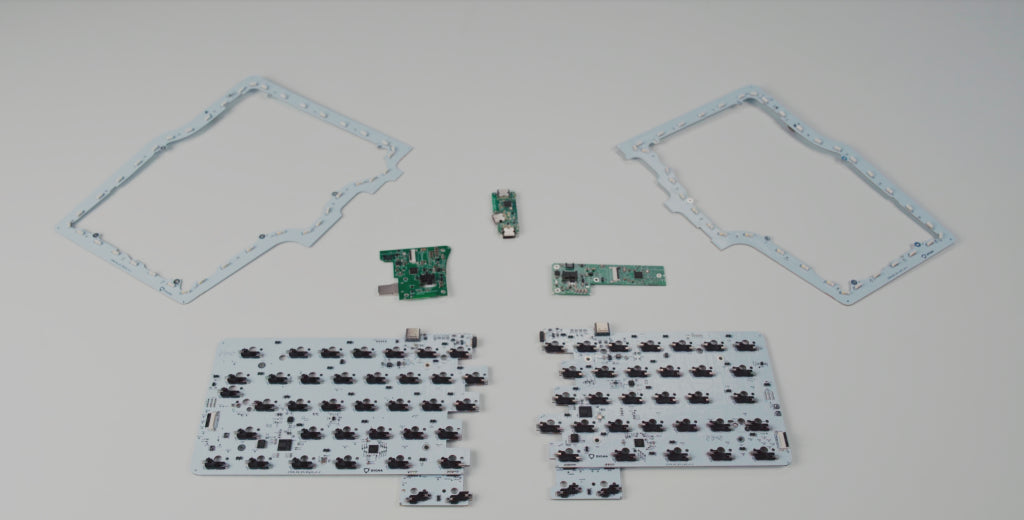
Since it's a split keyboard, it's like making two keyboards in one. Each half has the Key Scanner PCB, which has the switch sockets, one for each switch, and the RGBW backlight LEDs. Then, we have the RP 2040 microchip on each side, too.

Microchips are like the central functioning units of any highly specialized component.
Then, we have the RF Gateway PCB for the wireless functionality. Because of this bad boy, the Raise 2 can be connected either via 2.4 GHz RF, Bluetooth, or cables.
To make this possible, we use the Nordic NRF52820 microchip on each side.
Next is the underglow LED PCB, which we don't have in the OG Raise.

Finally, we have the Neuron, the brain of the keyboard; this one has the Nordic nRF52833.

The Raise 2 uses the same chips as the Dygma Defy. However, since its shape is completely different, getting the right PCB design has taken us seven months.
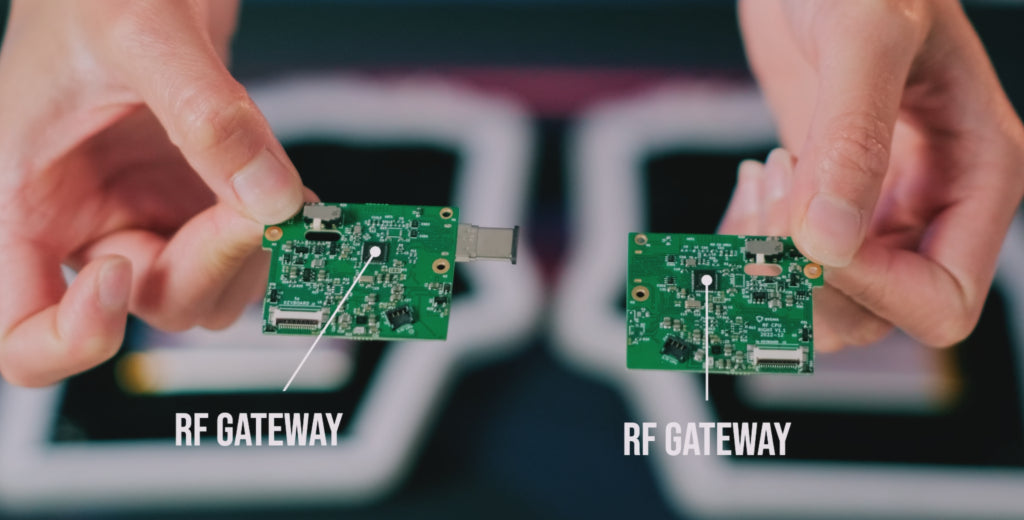
Keyboard layout
Talking about shapes, let's check the unique body of the Raise 2. Some of you may be wondering why it has this form.
The first reason for this shape is that it's a 60% keyboard, meaning there are no keys above the number row, no arrow keys, and no numpad.
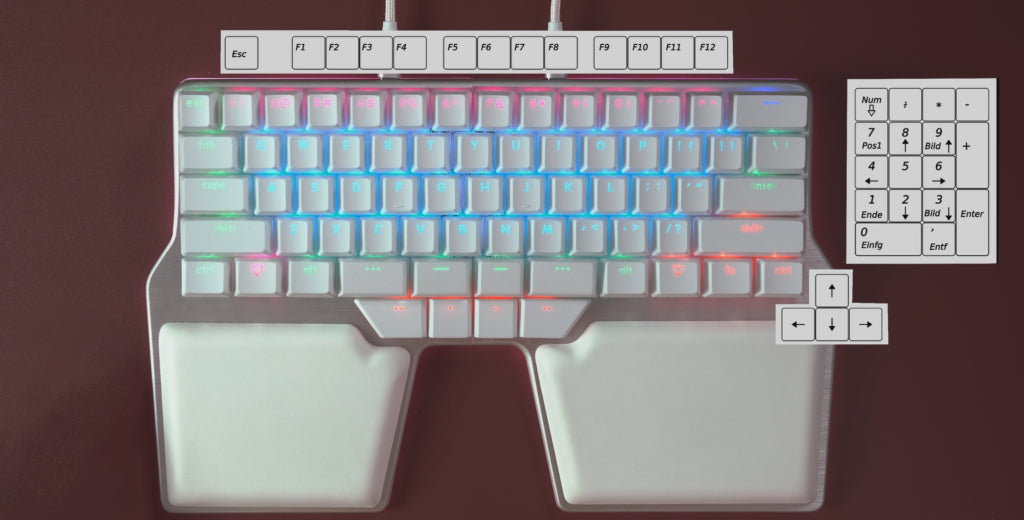
This doesn't mean there are no F keys or arrow keys… the keyboard is fully programmable, so those keys are just in different layers!
To learn more about programmability and layers, watch this video:
The main point of having it 60% is that you can have ALL of your keys, shortcuts, combos, and macros easily accessible without needing to leave the home row.
This shape also allows us to have palm rests, which are a key element in any ergonomic keyboard.
And just a little trivia, if you're wondering why this little bit sticks out this way, it's basically to accommodate gamers since they usually use the keyboard one unit to the left, like this.
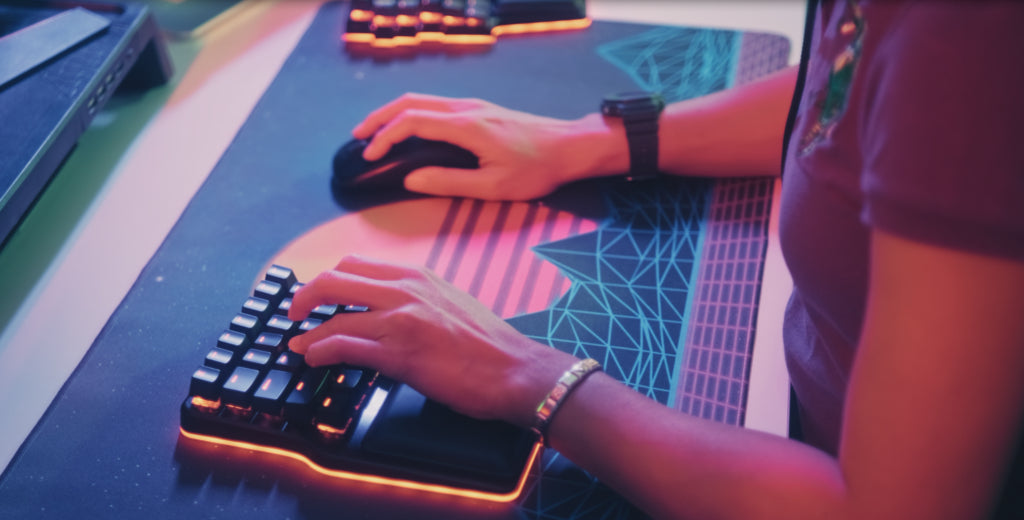
Top panel, base, tenting & tilting legs
The body of this keyboard is made of aluminum top panels. This is created by metal stamping and then anodized and brushed to ensure its high quality.
Then, we have the base, which is made of acrylonitrile butadiene styrene (ABS).

The base of the Raise 2 is entirely different from the OG Raise since there are more PCBs here, and we no longer have the light pipes. Those were used in the OG Raise to distribute the light for the underglow.
We redesigned the space inside to fit all the PCBs and the tenting and reverse tilting legs. These babies are integrated into the base. The legs are made of aluminum, the rods are made of plastic, and the tips have an antislip rubber.
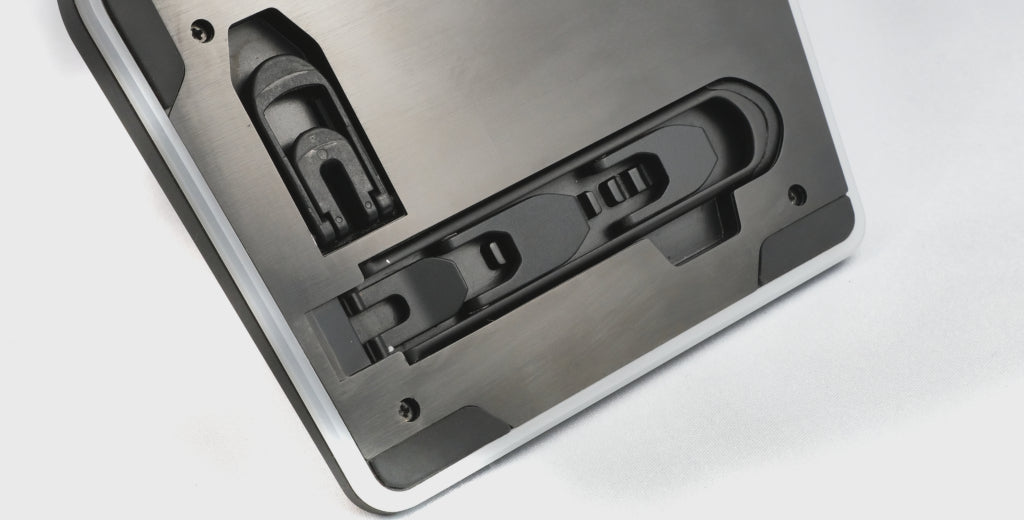
The design process of the legs has been, by far, the hardest. Since the right side is wider than the left, getting the right distance for the angle selector to ensure both sides have the same tenting degree has taken hundreds of trials and errors.
But these components weren't the only difficult ones.
Magnetic palm pads
The palm pads also gave us sleepless nights. Because its shape is so unique, finding the proper material for its texture and firmness has always been very difficult.
We've improved them quite a lot, making them softer and magnetic!

They have an outer layer of synthetic leather and a silicone gel inside. A rigid plastic piece holds the magnets in position. Finally, at the bottom, there’s an anti-slip black plastic made of polyurethane casting resin.
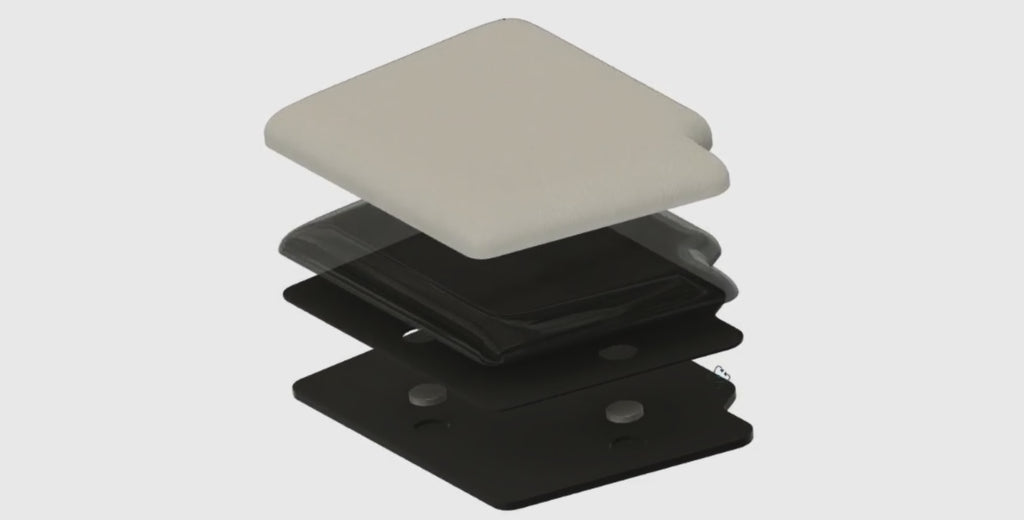
Keycaps
Last but not least, it's time to discuss the keycaps.
There are numerous profiles to choose from: DSA, Cherry, SA, XDA, etc. We decided to go for a profile that not only suited the keyboard's aesthetics but also allowed us to offer double-shot PBT.
So, on the Raise 2, English US and English UK keycaps will be double-shot PBT.

For special languages, such as Spanish, German, Nordic, French, and dash keycaps, we previously made them from laser-etched ABS.
However, ABS keycaps have proven to be a bit brittle, especially in the thumbkeys. They would sometimes break when removing them or if you accidentally pulled them incorrectly.
To fix this, we tried adding polycarbonate to the mix to make them more flexible, and after some testing in our factories, we thought, why not have it all made from polycarbonate?

Polycarbonate has exceptional impact resistance, is more flexible, and allows more light to shine through. They're more expensive to make, but they're way better than ABS.
How long will the manufacturing take?
We know that all of the above is important, but your main question is when the Raise 2 will be ready for shipping.
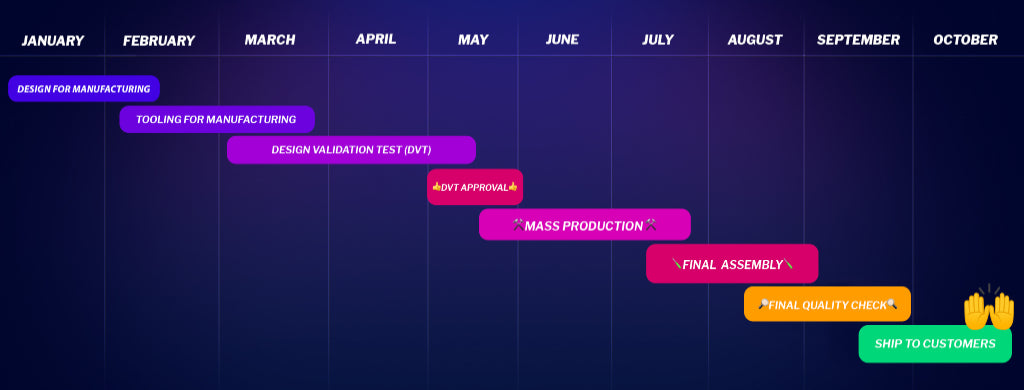
We've already finished the designs for manufacturing (DFM) for each of the components. On the electronics side, we've also passed the CE certification, which is the standard certification with the European health, safety, and environmental protection standards.
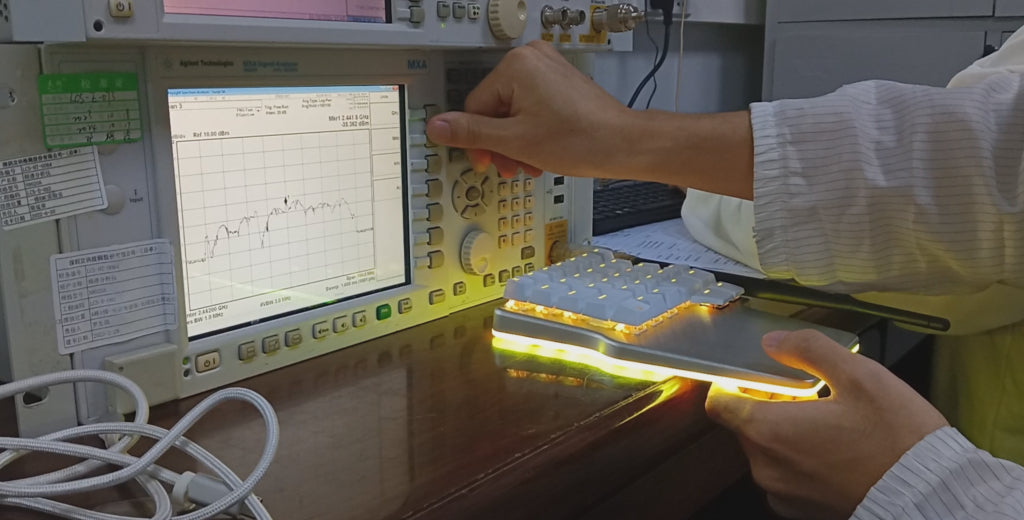
So now that the Chinese New Year is over –happy year of the Dragon– we're kicking off the Design Validation Test (DVT).
This means creating the molds needed to complete each component, getting samples, making the necessary adjustments, and finally, making a small run of about 50 keyboards to validate that everything fits together nicely. We have already received and validated samples for the black palm pads, and we're now making the white ones.
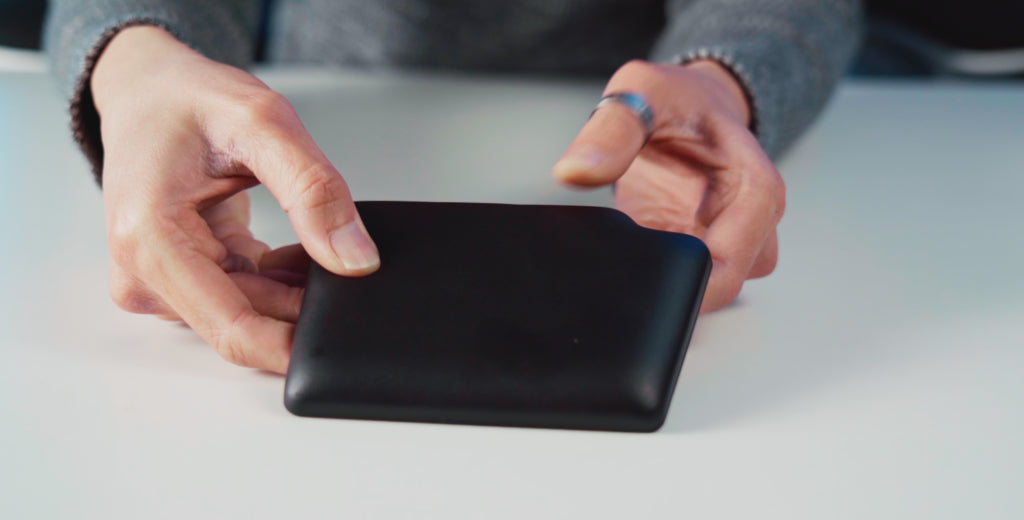
The DVT process is going to take until May. Afterward, we'll kick off mass production with the goal of shipping to customers in October.
Pre-sale starts on March 26, but meanwhile, you can make sure you'll get your keyboard at the best price. By pre-reserving your Raise 2, you’ll get a free add-on and free shipping, which means you can save over $200 in total.
There's still much to do until October, but fortunately, we can rely on the tons of experience we have from creating the OG Raise and the Defy. We can guarantee that we're determined that the Raise 2 meets your expectations as well as ours.
